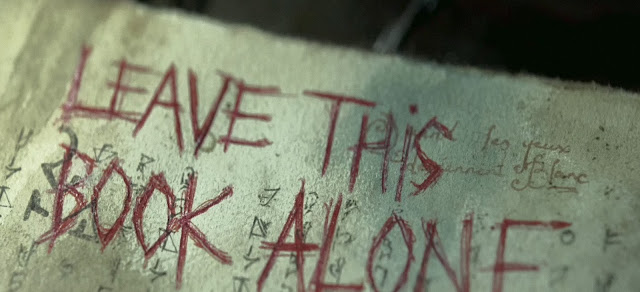Martyrs
 2009
2009Dir. Pascal Laugier
Anna (Morjana Alaoui) and Lucie (Mylène Jampanoï), two young women with revenge on their minds, track down a family who held one of them captive as a youngster. Their quest for vengeance and knowledge leads them on a gut-wrenching and depraved journey into the dark recesses of pain and suffering, anguish and torture.
Brutal. Shocking. Intense. Provocative. Raw. Unflinching. Disturbing. Numbing. Powerful. Unforgettable.
These are just a few of the words that have been used to describe the jaw dropping spectacle that is Martyrs. The thing is though, while they are all accurate, no words can really be utilised to fully prepare you for the visceral onslaught you will undergo while watching this breathtakingly extreme film.
With its astoundingly sadistic violence, Laugier's film is part of the current wave of extreme horror coming out of France, and firmly rooted in the realms of ‘Torture Porn’. Directed with ferocity, it strives to provoke and stimulate as much as it does to unsettle and horrify. Martyrs successfully transcends its contemporaries – which is fitting really, for a film about transcendence. The sheer scope and intention of this film arguably accounts for the depictions of pain and humiliation inflicted upon its protagonists, and indeed its audience. Beginning as a taut home-invasion narrative, events soon swerve in a whole new, unexpected direction. As soon as you start to think you know what’s going on, the story swerves again into uncharted territory. And it continues to swerve throughout. Martyrs toys with the conventions of the horror genre like a sadistic cat mercilessly clawing and playing with its defenceless prey. Genre and audience expectations are shredded and left to bleed, much like the protagonists, all over the place. The film offers up a few genuine surprises along the way and several plot twists are used here that other films would have saved for their climax.

The film begins intriguingly with a young girl, Lucie, fleeing from a warehouse she’s been held captive in. For how long we know not – this is just the first of many questions Martyrs poses throughout its running time. All we know for now is that she is battered and bruised and bloody and running for her life. The stark imagery recalls the famous photograph, by Nick Ut, of a young girl running bleeding and naked from the bombed Vietnamese village of Trang Bang in 1972. After we follow her experiences at a children’s home and her tentative friendship with another girl, Anna, the narrative follows Lucie as she bursts into the house of her suspected former captors as they sit down for breakfast. At this stage, the film promises to unfurl like Funny Games or Ils (Them); however it soon becomes obvious this is not how things will continue to play out. Like the subject matter, the film soon transcends this approach and adopts an almost spiritual glean as a meditation on the nature of suffering.
The violence – and there is a lot of violence – is blunt and realistic. Nothing occurs to lift the audience out of the film, such as CGI or flashy editing (a common staple of today’s impatient and stylised horror flicks; all strobe cuts and hyper pacing). Every blow that’s dealt in this film plunges you deeper into its murky depths. The violence just simply becomes unbearable, and its methodical and systematic occurrences run the risk of rendering it mundane and numbing. One suspects this is the point though, as a commentary on violence in horror and why we as an audience choose to experience this facet of cinema. Laugier seems to be saying that if we want violence and suffering then must endure what he is presenting to us. However he is not just content to create scenes of bodily devastation – he also wants us to think. We are almost snapped out of the story into the realm of repeating ‘Its only a movie, its only a movie’, before we are yanked off into another extraordinary direction and sucked back into the compelling story...

The acting is solid throughout and the special effects courtesy of the late Benoit Lestang, are startling in their effectiveness. The morality and ideology of the film, for all its physiological horror, maintains a contemplative and almost spiritual essence. Something undeniable pulls us into the midst of it all and holds our attention – the audience will find itself wanting answers. There is a lofty justification for the bloodshed and pain, which negates crassness and even pretension and goes some way to reflect contemporary society’s evolving attitudes towards what counts as ‘suffering’ and our need for answers concerning our place in this universe and what comes after...
The dénouement, when it comes, is utterly surprising and yet truly fitting for a film that dares to be so different. A transcendental horror film guaranteed to jolt your thoughts as much as your nervous system.


